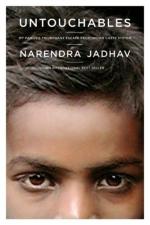
|
| Name: _________________________ | Period: ___________________ |
This test consists of 15 multiple choice questions and 5 short answer questions.
Multiple Choice Questions
1. According to Wilkerson in In "Chapter Six: The Measure of Humanity," what do social scientists say combines with racial bias to produce racism?
(a) Extremism.
(b) Overt hatred.
(c) Personal intention.
(d) Systemic power.
2. According to "The Trials of the Middle Castes: The Race to Get Under the White Tent," what caused the Supreme Court to rule that "White" means "Caucasian"?
(a) A Japanese immigrant tried to make the case that he should be considered "White."
(b) An Indian immigrant argued that he should be considered for citizenship.
(c) An Irish immigrant was arrested for shopping in a store signed "No Irish."
(d) A Cuban immigrant sued for the right to own property in Florida.
3. To whom is Wilkerson referring on page 4 when she describes someone as "a no-nonsense national figure overqualified by some estimates"?
(a) Hillary Clinton.
(b) Barack Obama.
(c) Bernie Sanders.
(d) Donald Trump.
4. What technique does Wilkerson use for the first time in the beginning of "An Old House and an Infrared Light"?
(a) Rhetorical questions.
(b) First person point of view.
(c) Anecdote.
(d) Analogy.
5. When 20 Black people arrived in the New World on a Dutch ship in 1619, what were they classified as?
(a) Indentured servants.
(b) Slaves.
(c) Merchandise.
(d) Colonists.
6. In "An American Untouchable," how does the high school principal in India refer to Martin Luther King'?
(a) As a "Negro."
(b) As an "untouchable."
(c) As an "American Gandhi."
(d) As a great leader.
7. In "Chapter Six: The Measure of Humanity," what reason does Wilkerson give for most people's participation in the American caste system?
(a) It allows them to discriminate without having to admit that they are racists.
(b) It is human nature to want to dominate others.
(c) It preserves their place in the hierarchy.
(d) It is too psychologically painful to admit that one's own position is unearned.
8. According to "Pillar Number Five: Occupational Hierarchy: The Jatis and the Mudsill," what percentage of Blacks worked in white-collar professions during the Great Depression?
(a) 5.
(b) 20.
(c) 10.
(d) 15.
9. In "Pillar Number Five: Occupational Hierarchy: The Jatis and the Mudsill," what is the rhetorical purpose of including the Hammond quotes?
(a) It demonstrates that religious belief is incompatible with endorsement of a caste system.
(b) This is a defining historical moment that explicitly supports the chapter's central claim.
(c) It bolsters Wilkerson's ethos, making the reader more receptive to her claims about India.
(d) This illustrates the depth of hatred that White Southerners had for the lowest caste.
10. What is the best definition of "endogamy" as used in "The Third Pillar: Endogamy and the Control of Marriage and Mating"?
(a) The practice of marrying outside one's own group.
(b) The practice of marrying within one's own group.
(c) Active interest in and welcoming of new people into one's group.
(d) The fear of people from outside of one's own group.
11. Where does the word "caste" come from?
(a) The Old Norse word "kasta," meaning "throw."
(b) The Middle English "outcasten," meaning "to expel or reject."
(c) The Portuguese word "casta," meaning "breed" or "race."
(d) The Latin "castus," meaning "chaste."
12. In "The Third Pillar: Endogamy and the Control of Marriage and Mating," what does Wilkerson imply was the reason for the prosecution of Hugh Davis?
(a) The Black woman in the relationship was already married.
(b) Davis raped a Black woman.
(c) Davis treated his Black partner as an equal.
(d) Very few white men had previously admitted to relationships with Black women.
13. In "Pillar Number Eight: Inherent Superiority versus Inherent Inferiority," what is the Louise Beavers anecdote meant to illustrate?
(a) That Mary Pickford was concerned about being upstaged by a Black actress.
(b) That it is impossible to judge intelligence and character based on skin color.
(c) That White filmmakers feared the audience reaction to an attractive Black woman.
(d) That Black Americans have been made to assume the markers of inferiority like an actor playing a role.
14. Besides the caste systems in India and the United States, which other caste system does Wilkerson say that she will focus on?
(a) Apartheid South Africa.
(b) Nazi Germany.
(c) The Nigerian Osu System.
(d) Yuan China.
15. Which of the following is the traditional Indian word for "caste"?
(a) Dalit.
(b) Kshatriya.
(c) Varna.
(d) Vaishya.
Short Answer Questions
1. In "A Long-Running Play and the Emergence of Caste in America," what does Wilkerson say Americans want to dismiss as a "sad, dark chapter" of American history (43)?
2. According to "Pillar Number Four: Purity versus Pollution," what makes the United States's racial hierarchy different from those in the rest of the Americas?
3. On page 59 of "Chapter Five: 'The Container We Have Built for You,'" when Harold Hale's daughter is about to return to school after a visit with a friend's family, what is the grandmother's response?
4. What is the best definition of "heritability" as used in "The Second Pillar: Heritability"?
5. What is the name of Gunnar Myrdal's 1944 study of race in America?
|
This section contains 880 words (approx. 3 pages at 300 words per page) |

|




